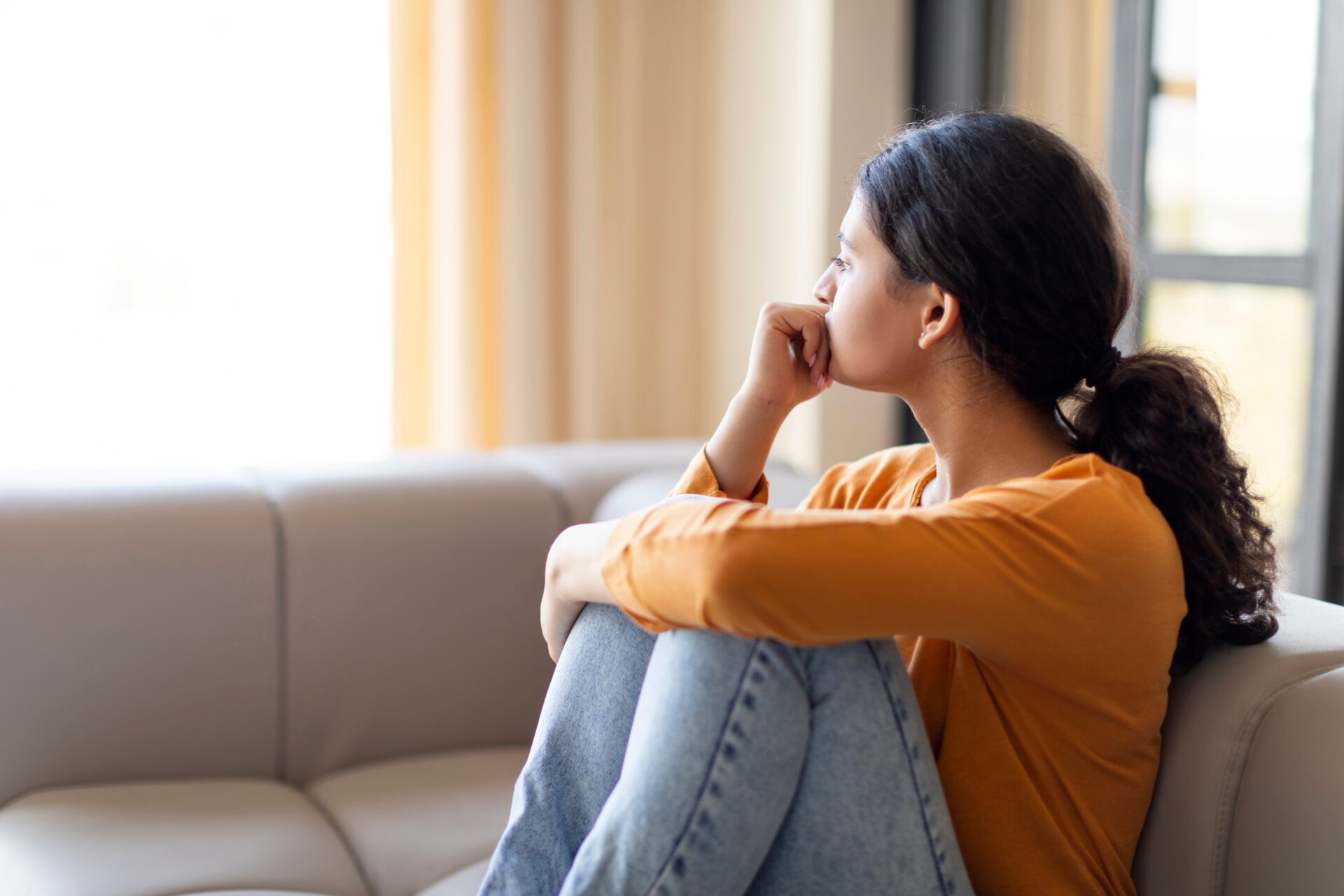Agoraphobia is an anxiety disorder characterized by intense fear or panic attacks in situations where a person feels trapped, helpless, or unable to escape. These fears may be triggered by actual or anticipated circumstances, such as using public transportation, being in crowds, or being in enclosed or open spaces.
By identifying the specific triggers associated with agoraphobia, individuals and their healthcare providers can work together to develop effective coping strategies and support recovery.

Panic Disorder and Agoraphobia Triggers
Many people with agoraphobia also experience panic disorder. These two conditions frequently develop together, and panic attacks often serve as a starting point for agoraphobic behaviors [1]. After an initial panic episode in a public or uncontrolled space, one may begin to fear that the situation will trigger future attacks. This creates a cycle of avoidance and increased anxiety.
Physical symptoms associated with panic attacks may contribute to sensations that can feel alarming or even life-threatening to some people. When this occurs, it becomes apparent that agoraphobia triggers are not limited to the event itself but instead are linked to the psychological aspects associated with it.
This heightened state of awareness causes people to scan their environments for potential threats. Over time, the fear of a repeat experience becomes stronger than the original event, reinforcing avoidance patterns and influencing decisions.
Common Environmental Agoraphobia Triggers
Environments that feel unpredictable or hard to leave are often among the most triggering. While some people with agoraphobia can manage mildly stressful settings, others may experience intense fear at the thought of leaving home.
Common settings that may provoke anxiety include [2]:
- Crowded places (shopping malls, stadiums, festivals)
- Public transportation (buses, subways, airplanes)
- Bridges and tunnels
- Large open parking lots or wide streets
- Remote or unfamiliar areas
People often report that these environments make them feel detached, lightheaded, or out of control. Even imagining exposure to these places can cause anticipatory anxiety.
Social and Interpersonal Agoraphobia Triggers
Human connection is vital, but it can also be a source of distress for those with agoraphobia. Social and interpersonal expectations can create high levels of social anxiety when someone feels unprepared or unsupported.
Social and interpersonal triggers may include [3]:
- Social obligations like work meetings or family gatherings
- Fear of judgment that heightens self-consciousness
- Dependence on others for transportation or emotional support
- Unexpected invitations or changes in routine
- Perceived pressure to recover quickly
These stressors are not just about the event itself, but also about the sense of being observed, misunderstood, or alone in managing symptoms. Compassionate support can significantly reduce the emotional impact of these triggers.
Psychological Agoraphobia Triggers
Agoraphobia is not only triggered by external environments but also by internal cues [4]. These can include thoughts, memories, and physical sensations that remind someone of past episodes. Internal triggers can be harder to predict, which adds to the unpredictability of agoraphobia.
Some common internal triggers include things like ruminating over past anxiety episodes, hyperawareness of body sensations, catastrophic thinking, intrusive thinking, and fear of losing control.
These thought patterns can intensify anxiety in situations that may otherwise feel safe. Therapy often helps people with agoraphobia learn how to identify and reframe these triggers using evidence-based techniques.
Avoidance and Common Triggers for Agoraphobia
Avoidance is a hallmark feature of agoraphobia, and it often stems directly from unaddressed triggers. Once a person identifies a situation that causes discomfort, they may begin to avoid it entirely. While avoidance may bring temporary relief, it tends to reinforce anxiety in the long run.
Typical scenarios where avoidance behaviors can occur might be [5]:
- Canceling appointments or skipping events that involve travel or unfamiliar places
- Refusing to use public transportation due to fear of being trapped
- Relying exclusively on others for errands, groceries, or appointments
- Creating elaborate safety routines to reduce perceived risk
- Becoming increasingly homebound even for basic needs or responsibilities
These behaviors can limit independence and reduce overall quality of life. Recognizing these patterns allows for targeted interventions, including gradual exposure therapy and cognitive-behavioral therapy (CBT). Understanding the role of triggers is a critical part of making progress toward overcoming agoraphobia [6].
Therapies to Manage Agoraphobia Triggers
Managing agoraphobia often requires a combination of therapy, medication, and lifestyle adjustments [7]. Therapies typically used in the treatment process seek to reduce the emotional power of triggers by building resilience, recognizing the duration of agoraphobia symptoms, and restoring confidence in navigating daily life. Even when symptoms are severe, recovery is possible with consistent support.
Therapies used to help manage triggers often include:
- Cognitive-behavioral therapy
- Exposure therapy
- Mindfulness techniques
- Medication support for anxiety or panic disorders
- Education and self-awareness
Support from trained professionals, loved ones, and peer groups plays a vital role. Treatment plans can be customized to meet personal needs, helping people regain a sense of control.
The Importance of Compassionate Understanding
It is important to remember that agoraphobia is not a choice. A compassionate and informed approach from loved ones and clinicians can make a significant difference in recovery, along with accessing the proper therapies and medication to manage agoraphobia.
Empathy can reduce shame and isolation, which often make symptoms worse. By helping people feel seen and supported, families and professionals can play a powerful role in promoting healing. Long-term progress depends not only on clinical treatment but also on building environments where people feel safe to try again.
Learning how to overcome agoraphobia begins with understanding its complexity and the variety of factors that contribute to fear. With time, patience, and the right tools, people can reduce avoidance and reclaim their independence.
- Chouinard, G., & Chouinard, V.-A. (2022). Agoraphobia. In StatPearls. StatPearls Publishing. https://www.ncbi.nlm.nih.gov/books/NBK554387/. Accessed May 24 2025.
- National Institute of Mental Health. (2022). Agoraphobia. U.S. Department of Health and Human Services. https://www.nimh.nih.gov/health/statistics/agoraphobia. Accessed May 24 2025.
- Mayo Clinic. (n.d.). Agoraphobia: Symptoms and causes. https://www.mayoclinic.org/diseases-conditions/agoraphobia/symptoms-causes/syc-20355987. Accessed May 24 2025.
- Pollard, C. A. (1996). Treatment of agoraphobia. Clinical Psychology Review, 16(1), 1–16. https://pubmed.ncbi.nlm.nih.gov/8838693/. Accessed May 24 2025.
- Leichsenring, F., Steinert, C., & Rabung, S. (2022). The efficacy of psychodynamic psychotherapy, cognitive behavior therapy, and medication in the treatment of anxiety disorders: A meta-analysis. Frontiers in Psychiatry, 13, 897554. https://pmc.ncbi.nlm.nih.gov/articles/PMC9378026/. Accessed May 24 2025.
- Anxiety and Depression Association of America. (n.d.). Overcoming agoraphobia: Q&A. https://adaa.org/learn-from-us/from-the-experts/blog-posts/consumer/overcoming-agoraphobia-qa. Accessed May 24 2025.
- Psych Central. (n.d.). Agoraphobia treatment: Home remedies & lifestyle changes. https://psychcentral.com/anxiety/agoraphobia-treatment#home-remedies-lifestyle-changes. Accessed May 24 2025.
The Clinical Affairs Team at MentalHealth.com is a dedicated group of medical professionals with diverse and extensive clinical experience. They actively contribute to the development of content, products, and services, and meticulously review all medical material before publication to ensure accuracy and alignment with current research and conversations in mental health. For more information, please visit the Editorial Policy.
MentalHealth.com is a health technology company guiding people towards self-understanding and connection. The platform provides reliable resources, accessible services, and nurturing communities. Its purpose is to educate, support, and empower people in their pursuit of well-being.
Nikki Seay is a professional writer with over a decade of experience in digital health and clinical healthcare.
Shivani Kharod, Ph.D. is a medical reviewer with over 10 years of experience in delivering scientifically accurate health content.
The Clinical Affairs Team at MentalHealth.com is a dedicated group of medical professionals with diverse and extensive clinical experience. They actively contribute to the development of content, products, and services, and meticulously review all medical material before publication to ensure accuracy and alignment with current research and conversations in mental health. For more information, please visit the Editorial Policy.
MentalHealth.com is a health technology company guiding people towards self-understanding and connection. The platform provides reliable resources, accessible services, and nurturing communities. Its purpose is to educate, support, and empower people in their pursuit of well-being.


